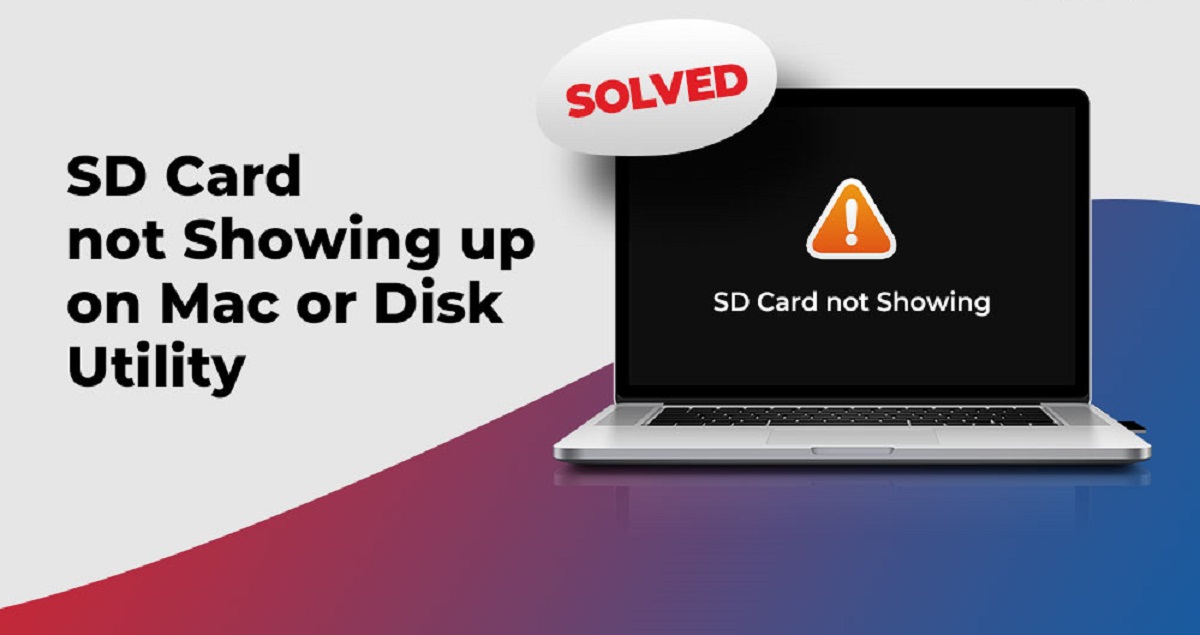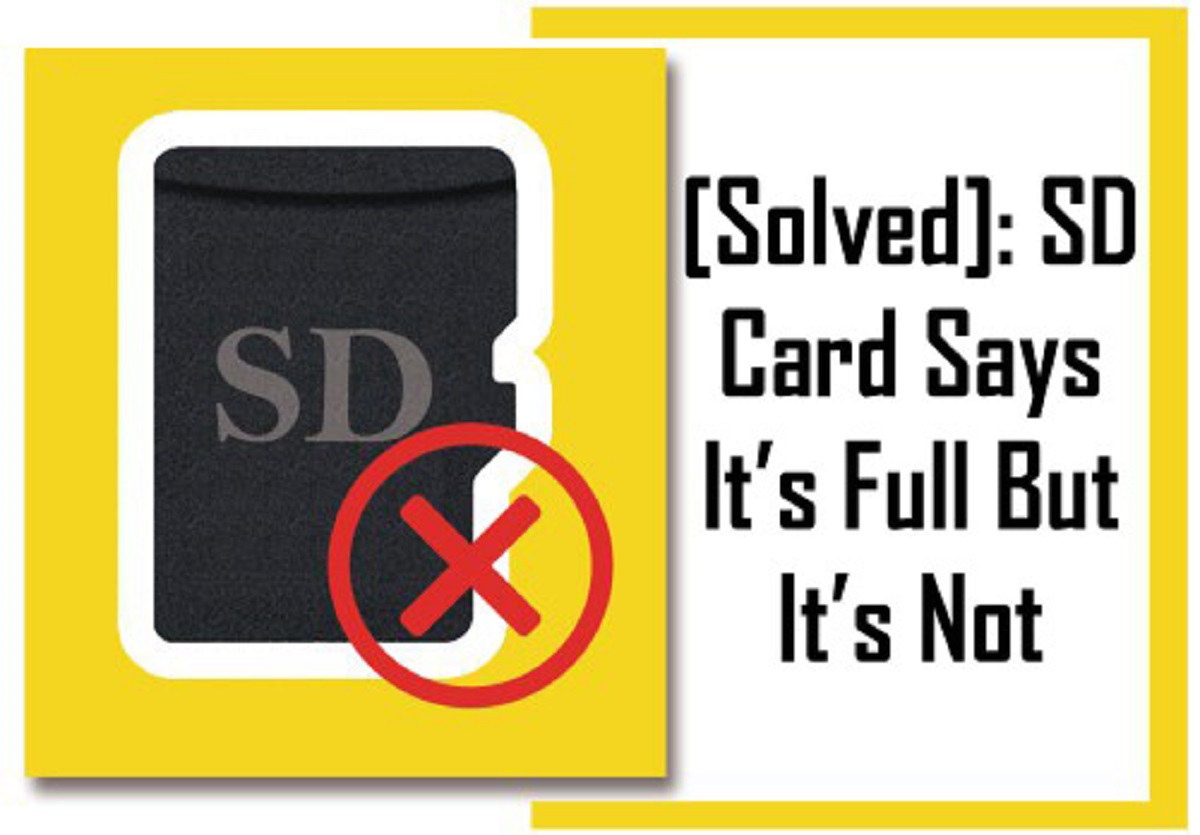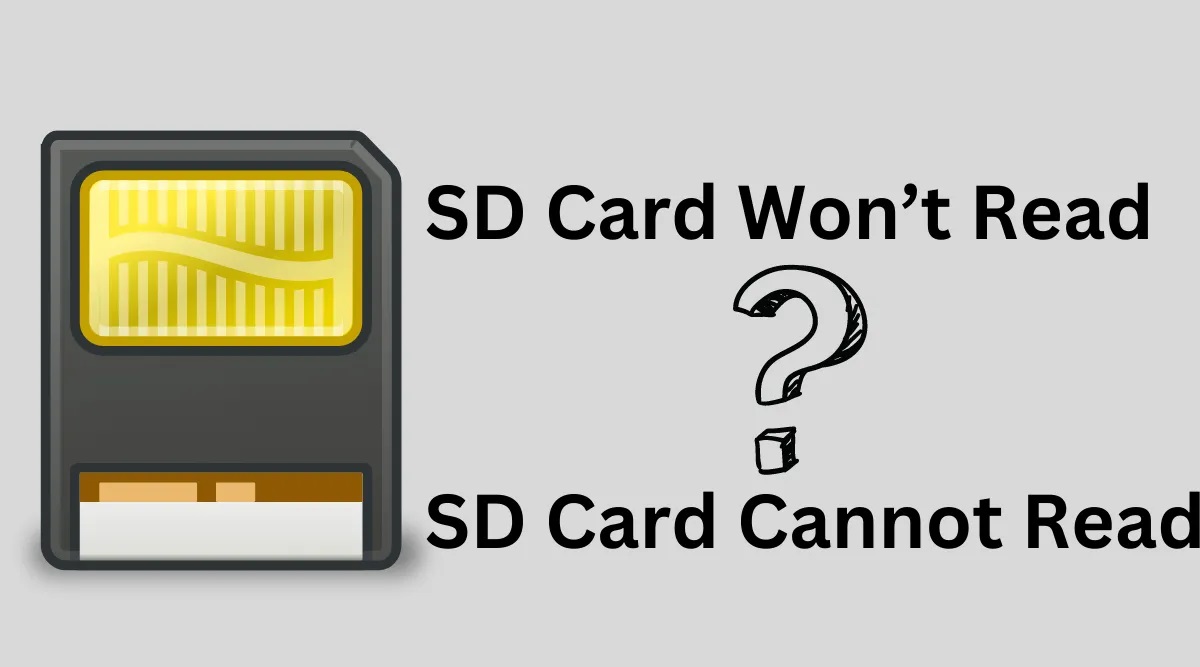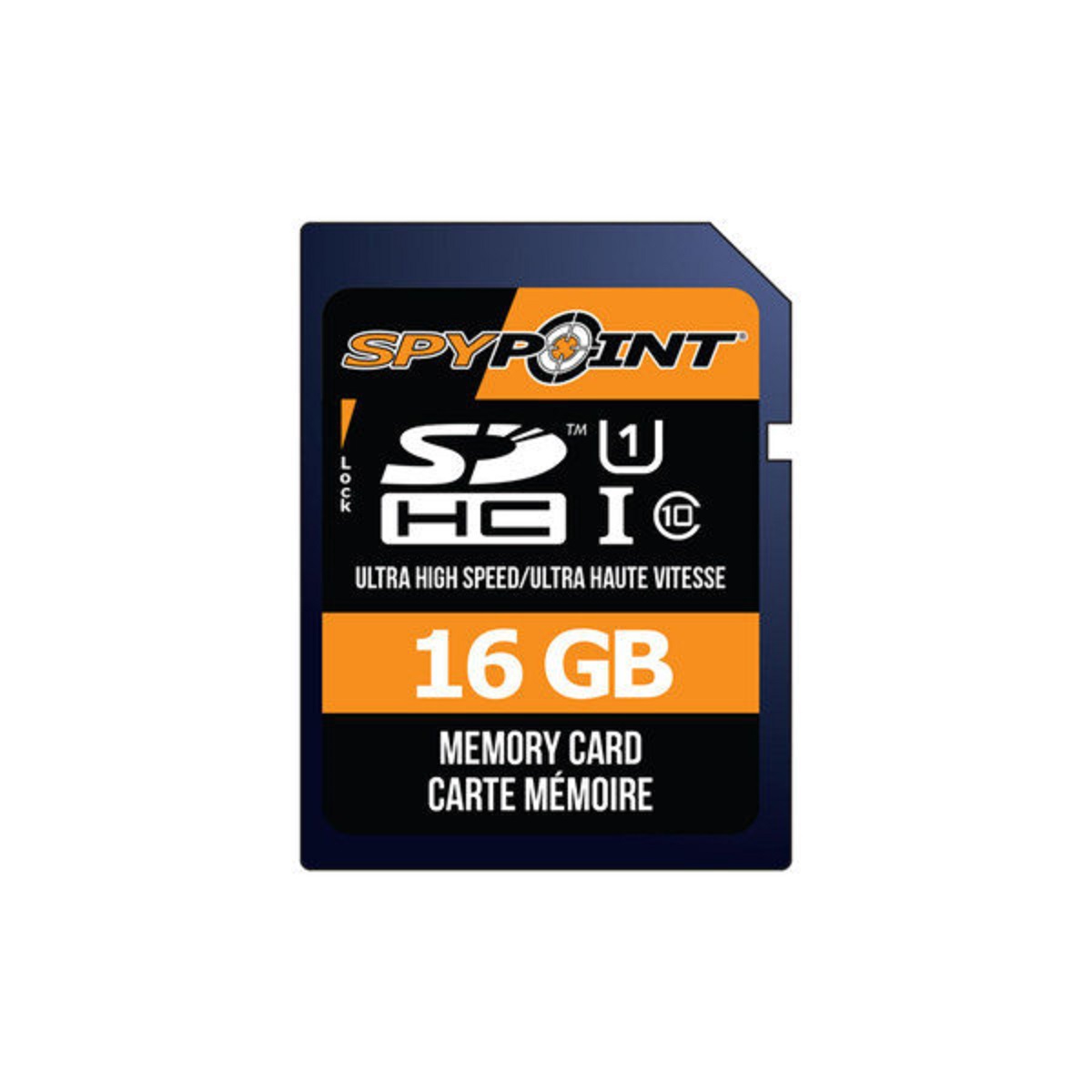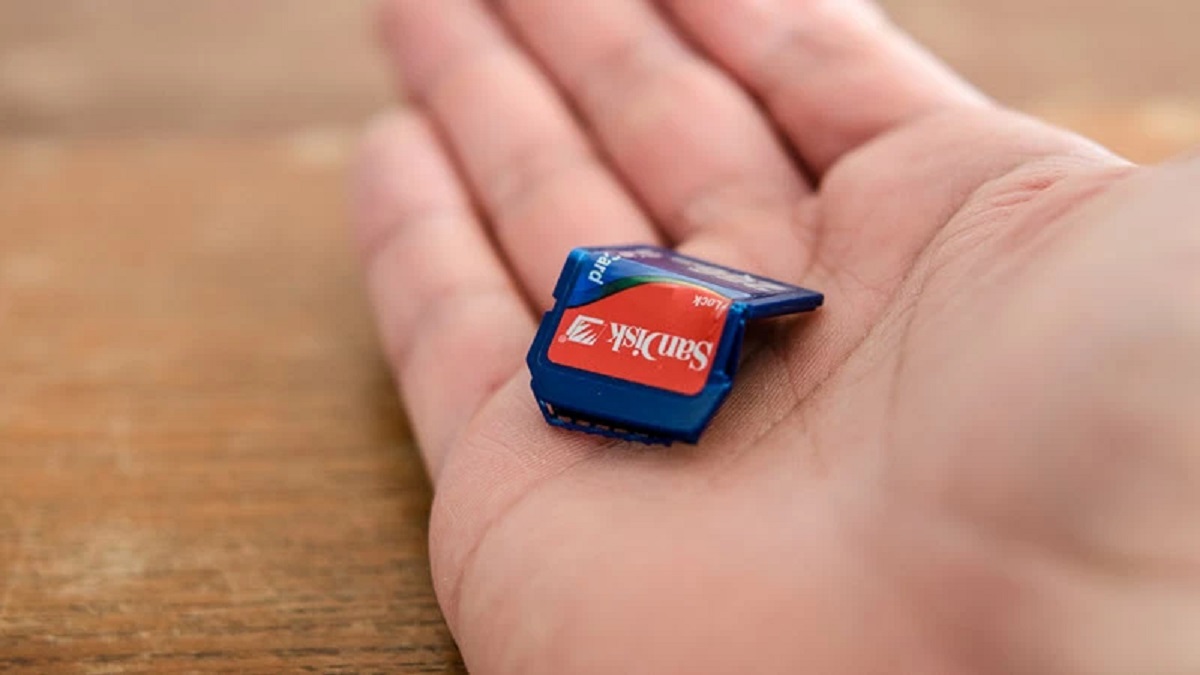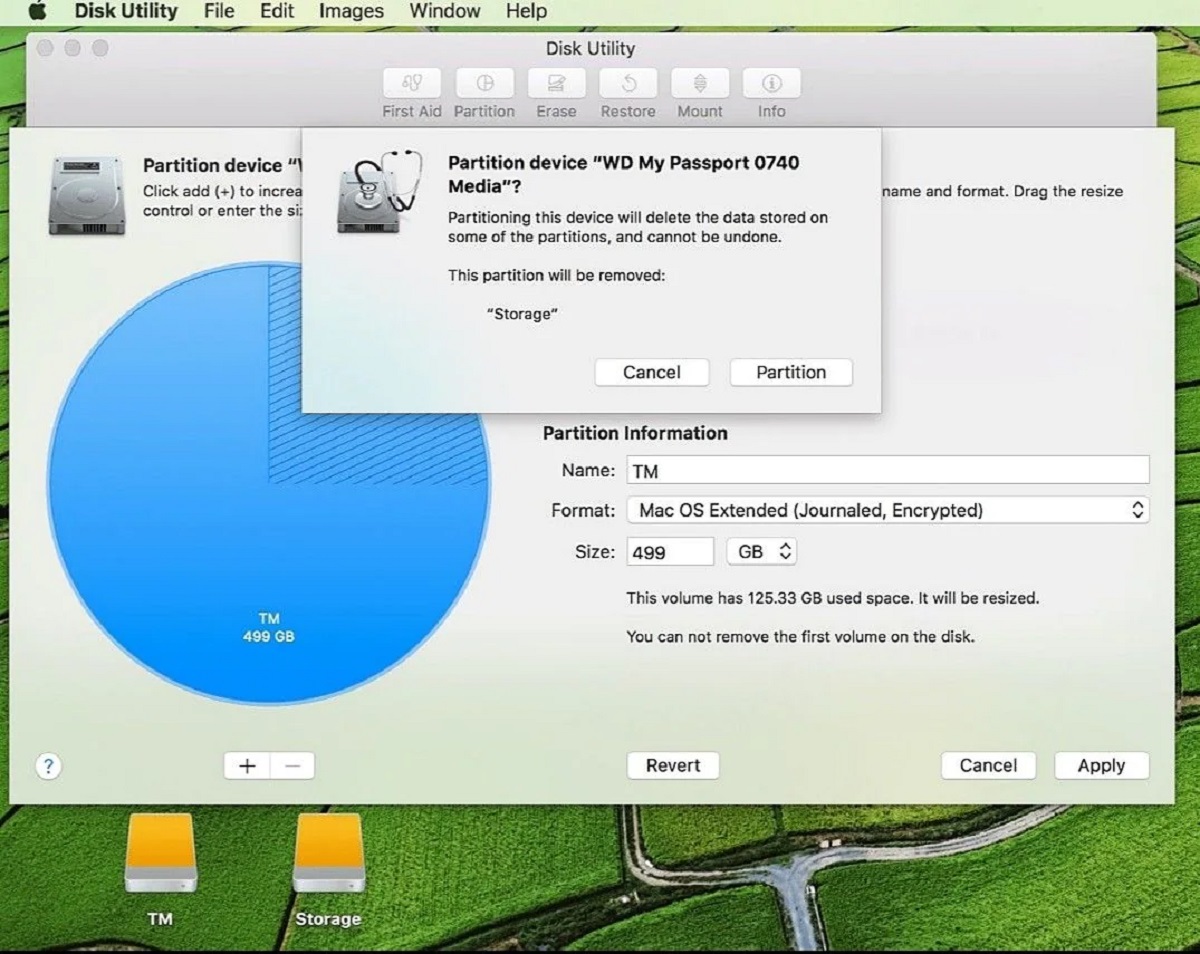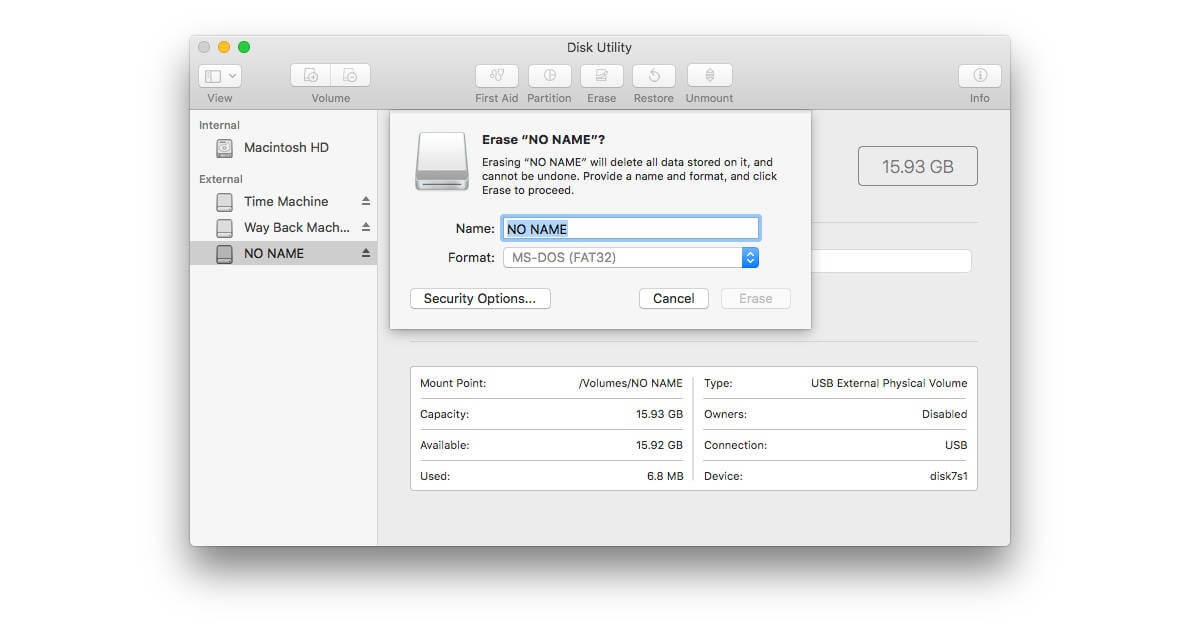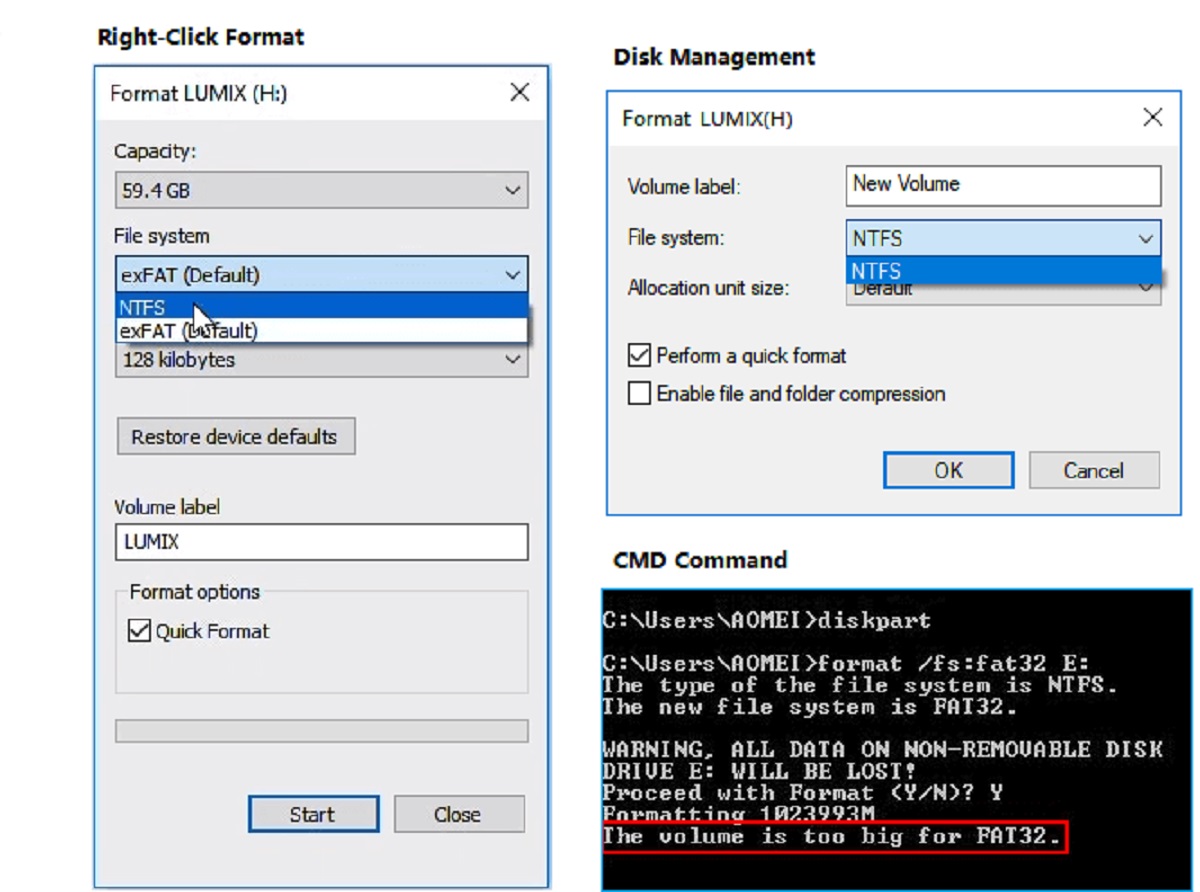Common Reasons why SD Card is not showing up on Mac
Having your SD card not show up on your Mac can be frustrating, especially when you’re relying on it to access or transfer important files. Several factors can cause this issue, and understanding the common reasons will help you troubleshoot the problem effectively. Here are some of the most frequent explanations for why your SD card is not showing up on your Mac:
1. Outdated SD Card Reader driver:
One of the primary reasons for an SD card not being recognized by your Mac is an outdated or incompatible SD Card Reader driver. If your driver is outdated, it may not be able to recognize the SD card, causing it not to appear on your Mac. Updating the driver to the latest version can usually resolve this problem.
2. Corrupted or damaged SD Card:
A corrupted or physically damaged SD card may also prevent it from showing up on your Mac. If the card has been dropped, exposed to water, or suffered from any physical damage, there is a chance that it may not be readable by your Mac. In such cases, data recovery services or replacing the SD card may be necessary.
3. Improperly formatted SD Card:
If your SD card is not formatted correctly, it may not be recognized by your Mac. Different operating systems and devices have specific formatting requirements, such as FAT32 or exFAT. If your SD card is not formatted to the proper file system, it won’t be recognized by your Mac. Reformatting the SD card to the correct file system can often solve the issue.
4. SD Card compatibility issues:
Not all SD cards are compatible with Macs, especially if you have an older Mac model. Some SD cards may require an adapter or may be supported only up to a certain capacity. Ensure that your SD card is compatible with your Mac to avoid compatibility issues and ensure smooth operation.
5. Dust or debris in the SD Card reader slot:
Over time, dust or debris can accumulate in the SD card reader slot of your Mac, hindering proper connectivity. Carefully inspect the slot and clean it using compressed air or a soft brush to remove any dirt or debris. This can help establish a reliable connection between your SD card and Mac.
6. Mac settings preventing SD Card detection:
In some cases, the settings on your Mac may be preventing the SD card from being detected. Check your Mac’s settings to ensure that the SD card slot is enabled and that the necessary drivers are activated. Adjusting these settings can often help the SD card show up on your Mac.
7. Faulty SD Card reader hardware:
If you have tried all the above solutions and your SD card still doesn’t show up on your Mac, the issue may lie with the SD card reader hardware itself. In such cases, contacting Apple support or a professional technician may be necessary to diagnose and resolve the hardware problem.
Understanding the common reasons why your SD card is not showing up on your Mac can help you troubleshoot and fix the issue effectively. By identifying the root cause, you can take the appropriate steps to resolve the problem and regain access to your valuable data.
Outdated SD Card Reader driver
An outdated SD Card Reader driver is one of the common reasons why your SD card may not be showing up on your Mac. The SD Card Reader driver is responsible for facilitating the communication between your Mac and the SD card, allowing it to be detected and accessed. When the driver is outdated or incompatible, it may fail to recognize the SD card, resulting in it not appearing on your Mac’s screen.
To resolve this issue, you need to update the SD Card Reader driver to the latest version compatible with your Mac. Here’s how you can do it:
1. Check for Updates: Begin by checking if updates for your SD Card Reader driver are available. Open the App Store and click on the “Updates” tab. Look for any available updates related to the SD Card Reader driver.
2. Install Updates: If updates are available, click on the “Update” button next to the SD Card Reader driver. The update will download and install automatically. Follow any on-screen instructions if prompted.
3. Restart Your Mac: Once the update is complete, restart your Mac to ensure the changes take effect. After the restart, insert your SD card into the card reader slot and check if it is now recognized by your Mac.
4. Manual Update: If there are no updates available or if the automatic update process does not work, you may need to manually update the SD Card Reader driver. Go to the manufacturer’s website for your Mac and locate the driver section. Download the latest driver specifically designed for your Mac model and operating system version. Install the downloaded driver and restart your Mac.
Updating the SD Card Reader driver can often resolve the issue of the SD card not showing up on your Mac. If, after updating the driver, the problem persists, you can try other troubleshooting methods to identify and fix the underlying cause.
Corrupted or damaged SD Card
Another common reason why your SD card may not be showing up on your Mac is if it is corrupted or physically damaged. A corrupted SD card can occur due to various reasons, such as improper removal, file system errors, or malware infections. Physical damage to the SD card can result from drops, water exposure, or wear and tear over time. In both cases, the data on the SD card may become inaccessible and the card may not be recognized by your Mac.
To determine if the SD card is corrupted or physically damaged, you can try the following steps:
1. Inspect the SD Card: Carefully examine the SD card for any visible signs of damage, such as cracks, bends, or watermarks. If you notice any physical damage, it is likely that the card is the root cause of the problem. In such cases, data recovery services or replacing the SD card may be necessary.
2. Use Disk Utility: Connect the SD card to your Mac and open Disk Utility. You can find it by searching for it in Spotlight or navigating to “Applications” > “Utilities.” In Disk Utility, select the SD card and click on the “First Aid” button. This will scan and repair any file system errors on the card. If the repair is successful, the SD card may become accessible again.
3. Recover Data: If the SD card is recognized but you are unable to access your files, you can use data recovery software to retrieve the data before attempting any repairs. There are various third-party data recovery tools available for both Mac and Windows systems, which can help recover files from a corrupted or damaged SD card.
4. Format the SD Card: If the SD card cannot be repaired or recovered, formatting the card may be the last option. However, formatting will erase all data on the card, so it should only be done as a last resort. Open Disk Utility, select the SD card, and click on the “Erase” button. Choose the desired file system format and click “Erase” to format the card.
It is important to note that attempting DIY repairs or recovery methods may further damage the SD card or compromise data. If you are unsure or uncomfortable with performing these steps, it is recommended to seek professional assistance or contact the manufacturer for support.
Improperly formatted SD Card
An improperly formatted SD card can be another reason why it is not showing up on your Mac. Different operating systems and devices have specific formatting requirements for SD cards. If the card is not formatted correctly, your Mac may not be able to recognize it, resulting in it not appearing on your screen.
To fix this issue, you can follow these steps to format the SD card correctly:
1. Insert the SD Card: Connect the SD card to your Mac using a card reader or the built-in SD card slot if available.
2. Open Disk Utility: Open Disk Utility by searching for it in Spotlight or navigating to “Applications” > “Utilities.”
3. Select the SD Card: In Disk Utility, you should see the SD card listed on the left-hand side. Select it to view more options.
4. Erase the SD Card: Click on the “Erase” button at the top of the window. This will bring up the Erase dialog box.
5. Choose File System Format: In the Erase dialog box, choose the appropriate file system format for your needs. If the SD card will only be used on a Mac, select “Mac OS Extended (Journaled).” If you plan to use the card on both Mac and Windows systems, select “ExFAT.”
6. Enter a Name: Give the SD card a name that will help you identify it easily.
7. Click Erase: Once you have selected the format and entered the name, click on the “Erase” button to begin the formatting process. Note that formatting will erase all data on the SD card, so make sure to back up any important files before proceeding.
8. Wait for Formatting: Allow Disk Utility to complete the formatting process. Once it is finished, the SD card should appear on your Mac and be ready for use.
If you have multiple computers or devices that will use the SD card, it is recommended to format the card on the device it will primarily be used with. This will ensure compatibility and better performance.
By formatting the SD card correctly, you can ensure that it is recognized by your Mac and eliminate any issues related to improper formatting.
SD Card compatibility issues
SD card compatibility can be another reason why it may not be showing up on your Mac. Not all SD cards are compatible with Macs, especially if you have an older Mac model. Additionally, some SD cards may require an adapter or may only be supported up to a certain capacity. Understanding the compatibility factors can help you determine why your SD card is not being detected on your Mac.
Here are some considerations regarding SD card compatibility:
1. Mac Model: Older Mac models may not have built-in SD card slots or may have limited compatibility. Ensure that your Mac model supports SD cards and check its specifications for maximum supported card capacity.
2. SD Card Type: There are different types of SD cards available, including SDHC (Secure Digital High Capacity) and SDXC (Secure Digital Extended Capacity). Ensure that your Mac is compatible with the specific SD card type you are using.
3. SD Card Adapter: Some SD cards may require the use of an adapter, especially if you have a microSD card that needs to be inserted into an SD card slot. Make sure you have the appropriate adapter for your SD card and that it is securely connected.
4. Capacity Limitations: Check if your Mac has limitations on the maximum capacity it can recognize for SD cards. Older Mac models may not support higher-capacity SD cards, so it is important to verify the compatibility.
5. Write Protection: Some SD cards have a write protection switch that, when enabled, prevents any changes to the card’s content. Ensure that the write protection switch on your SD card is not enabled, as it can prevent your Mac from recognizing the card.
6. Card Reader Speed: The speed class of an SD card determines how quickly data can be read or written. While higher speed classes offer better performance, they may also have compatibility limitations with certain devices, including Macs. Make sure your SD card speed class is compatible with your Mac.
If you encounter compatibility issues with your SD card, consider using a different card that is known to be compatible with your Mac. Additionally, check for firmware or system updates for your Mac that may resolve any compatibility problems.
Understanding the compatibility factors and ensuring the right SD card type, adapter, and capacity for your Mac can help resolve the issue of your SD card not showing up on your Mac.
Dust or debris in the SD Card reader slot
A common reason why your SD card may not be showing up on your Mac is the presence of dust or debris in the SD Card reader slot. Over time, tiny particles can accumulate in the slot, obstructing the connection between the SD card and your Mac. This can prevent the SD card from being detected and appearing on your Mac’s screen.
Here are the steps you can take to clean the SD Card reader slot:
1. Power Off Your Mac: Before attempting to clean the SD Card reader slot, make sure your Mac is powered off to avoid causing any damage or short-circuits.
2. Inspect the SD Card Reader Slot: Use a flashlight or a magnifying glass to carefully examine the SD Card reader slot for any visible dust or debris. Pay close attention to the pins and connectors inside the slot where the SD card makes contact.
3. Compressed Air: Gently blow compressed air into the SD Card reader slot to remove any loose dust or debris. Hold the can of compressed air upright and ensure you use short bursts of air to prevent excessive pressure. Be cautious not to blow the dust further inside the slot.
4. Soft Brush: If compressed air alone is not enough, use a soft brush, like a clean cosmetic brush or a small paintbrush, to gently sweep away any stubborn dust or debris. Make sure to use gentle strokes and avoid applying excessive pressure.
5. Verify Cleanliness: After cleaning, use the flashlight or magnifying glass to verify that the SD Card reader slot is free from any visible dust or debris. If necessary, repeat the previous steps until the slot appears clean.
6. Test SD Card: Insert the SD card into the cleaned SD Card reader slot and check if it is now recognized by your Mac. Make sure to insert the SD card correctly, with the gold contacts facing down.
Regularly cleaning the SD Card reader slot can prevent dust and debris buildup, ensuring smooth and reliable connections between your Mac and the SD card. If cleaning the slot does not resolve the issue, consider trying the SD card on another device or seeking further assistance for potential hardware or software issues.
Mac settings preventing SD Card detection
It is possible that certain Mac settings are preventing your SD card from being detected and showing up on your Mac. These settings can restrict the recognition of external storage devices, including SD cards. By adjusting these settings, you can potentially resolve the issue and allow your Mac to detect the SD card properly.
Here are the steps to adjust the Mac settings to enable SD card detection:
1. System Preferences: Open the “System Preferences” on your Mac, which can be found either on the dock or by clicking on the Apple icon in the top-left corner of your screen and selecting “System Preferences.”
2. Click on “Security & Privacy”: In the System Preferences window, locate and click on “Security & Privacy.” It is represented by a padlock icon.
3. Authorization: If the “Security & Privacy” lock icon at the bottom-left corner of the window is locked, click on it and enter your Mac administrator password to unlock it. This will allow you to make changes to the settings.
4. Privacy Tab: In the “Security & Privacy” window, click on the “Privacy” tab at the top.
5. Accessibility: Scroll through the left-hand sidebar until you find “Accessibility” and click on it.
6. Add SD Card Reader: On the right-hand side, click on the “+” button and locate the SD Card Reader application or process. It may be called “sdcardd” or something similar. Select it and click “Open.” This grants accessibility permission to the SD Card Reader process.
7. Restart Mac: Once you have added the SD Card Reader to the Accessibility list, restart your Mac to ensure that the changes take effect.
After restarting, insert the SD card into the card reader slot and see if it is now recognized by your Mac. Adjusting the Mac settings to allow SD card detection can often resolve the issue and enable your Mac to detect and display the SD card.
Note that the steps above may vary slightly depending on your macOS version. If you are unable to locate the exact options mentioned, refer to the macOS documentation or search online for specific instructions related to your macOS version.
If your SD card is still not showing up after adjusting the Mac settings, consider trying the SD card on another device or consulting Apple support for further assistance.
Faulty SD Card reader hardware
If you have tried all the previous solutions and your SD card still does not show up on your Mac, the issue may lie with the SD card reader hardware. A faulty SD card reader can prevent proper communication between the SD card and your Mac, resulting in the card not being detected.
Here are some steps you can take to troubleshoot and address faulty SD card reader hardware:
1. Clean the SD Card Reader Slot: Before assuming a hardware issue, make sure to clean the SD card reader slot as dust or debris inside the slot can cause connection problems. Refer to the previous section on how to clean the SD card reader slot.
2. Use Different SD Cards: Test different SD cards with your Mac to verify if the issue is specific to one SD card or if it affects all cards. If only one SD card is not being detected, the problem may be with that particular card. However, if multiple SD cards are not working, it indicates a potential hardware issue.
3. Test on Another Device: Connect the SD card reader or SD card to another device, such as a different Mac or a Windows computer, to check if it is recognized. If the SD card works properly on another device, it further suggests a problem with the SD card reader on your Mac.
4. Contact Apple Support: If the SD card reader hardware appears to be the root cause of the issue, it is recommended to contact Apple support or visit an authorized service center. They can diagnose the exact problem with your SD card reader and provide potential solutions, such as repair or replacement.
5. External Card Reader: As an alternative, you can use an external USB card reader. These are readily available and can bypass the built-in SD card reader on your Mac. Simply connect the external card reader to your Mac via a USB port and insert the SD card into the reader. This can help you access the SD card if the built-in reader is faulty.
If Apple support confirms a hardware issue with the SD card reader, they will be able to advise you on repair options or potential replacement of the faulty hardware. It’s important to consult professional advice before attempting any hardware repairs or replacements on your own, as it may void any warranties or create further damage.
Possible solutions to fix SD Card not showing up on Mac problem
If your SD card is not showing up on your Mac, there are several solutions you can try to resolve the issue. Here are some possible solutions that can help you fix the problem:
1. Update SD Card Reader Driver: Ensure that your SD card reader driver is up to date. Check the manufacturer’s website or use the App Store to download and install any available updates for your Mac’s SD card reader driver.
2. Check SD Card for Physical Damage: Inspect the SD card for any physical damage, such as cracks or bends. If the card appears damaged, it may be the cause of the problem. Consider using a different SD card or contacting professional data recovery services for assistance.
3. Format the SD Card Correctly: Use Disk Utility to format the SD card correctly to the appropriate file system format – commonly FAT32 or exFAT. Formatting the card erases all data, so make sure to back up any important files before proceeding.
4. Test SD Card on Another Device: Insert the SD card into another compatible device, such as another computer or a camera, to verify if it is recognized. If the SD card works on other devices but not on your Mac, the issue may lie with your Mac’s hardware or settings.
5. Clean the SD Card Reader Slot: Remove any dust or debris from the SD card reader slot using compressed air or a soft brush. Cleaning the slot can ensure a proper connection between the SD card and the Mac.
6. Adjust Mac Settings: Double-check the Mac settings related to the SD card. Ensure that the SD card slot is enabled and the necessary drivers are activated. Adjusting the settings may resolve any issues preventing the SD card from being detected.
7. Repair or Replace the SD Card Reader Hardware: If none of the above solutions work, it is possible that the SD card reader hardware itself is faulty. Consider contacting Apple Support or visiting an authorized service center to diagnose and repair the hardware issue.
Remember to attempt these solutions one at a time and test the SD card after each step to determine if the issue is resolved. It is also important to back up your data regularly to avoid any potential data loss due to SD card issues.
Update SD Card Reader driver
Updating the SD Card Reader driver is a crucial step in troubleshooting the issue of an SD card not showing up on your Mac. The SD Card Reader driver is responsible for facilitating communication between your Mac and the SD card, enabling the card to be detected and accessed.
To update the SD Card Reader driver, follow these steps:
1. Check for Updates: Start by checking if there are any updates available for your Mac’s SD Card Reader driver. Open the App Store on your Mac.
2. Click on the “Updates” Tab: Once the App Store is open, click on the “Updates” tab at the top of the window. This will display any available updates for your Mac system and its drivers.
3. Locate SD Card Reader driver Update: Look for any updates related to the SD Card Reader driver. If an update is available, you should see it listed. Pay attention to updates that specifically mention improvements or enhancements for the SD Card Reader functionality.
4. Click “Update”: If an update for the SD Card Reader driver is displayed, click on the “Update” button next to it. The update will begin downloading and installing automatically. During the installation process, you may be prompted to enter your administrator password.
5. Restart Mac: Once the update is complete, it is recommended to restart your Mac to ensure that the changes take effect.
After restarting your Mac, insert the SD card into the card reader slot and check if it is now recognized and appears on your Mac’s screen.
Regularly checking for and installing updates for your Mac’s drivers, including the SD Card Reader driver, is essential to ensure compatibility and optimal performance. Outdated drivers may lack the necessary support for newer SD card models or may have bugs that can interfere with the proper functioning of the SD card reader.
If updating the SD Card Reader driver does not resolve the issue, consider trying the SD card on another device or exploring other solutions discussed in this article.
Check SD Card for physical damage
If your SD card is not showing up on your Mac, one possible reason could be physical damage to the card itself. Physical damage can occur due to mishandling, drops, exposure to water or extreme temperatures, or general wear and tear. When a physical damage occurs, it can affect the SD card’s internal components or its connection with the card reader, leading to the SD card not being recognized by your Mac.
To check for physical damage on the SD card, follow these steps:
1. Inspect the SD Card: Carefully examine the SD card for any visible signs of physical damage. Look for cracks, bends, scratches, or any other abnormalities on the card’s surface.
2. Check the Metal Contacts: Take a close look at the gold metal contacts on the SD card. Ensure they are clean, free from dirt, and not scratched. Any damage or dirt on these contacts can prevent the SD card from establishing a reliable connection with the card reader.
3. Examine the Card’s Shell: Inspect the plastic shell or casing of the SD card. Look for any signs of damage, such as cracks or chips, that might indicate internal damage.
4. Try a Different Card: If you have another SD card available, insert it into the same card reader slot to see if it is recognized by your Mac. This helps determine if the issue lies with the card reader or the specific SD card.
If you notice any visible physical damage on the SD card, it is likely the cause of the problem, and the data stored on the card may be at risk. In such cases, consider the following options:
1. Use Data Recovery Services: If the data on the damaged SD card is crucial, you can contact professional data recovery services. They have specialized tools and expertise to recover data from physically damaged SD cards.
2. Replace the SD Card: If the SD card is physically damaged beyond repair or data recovery is not necessary, consider replacing it with a new SD card. Ensure you choose a compatible and reliable SD card brand and capacity for your Mac.
Taking care of your SD cards and handling them properly can minimize the risk of physical damage. Always handle SD cards by their edges, keep them in protective cases when not in use, and avoid exposing them to extreme temperatures or moisture. Regularly backing up the data on the SD card can also prevent data loss in case of physical damage or other issues.
Format the SD Card correctly
If your SD card is not showing up on your Mac, one possible reason could be that it is not formatted correctly. Different operating systems and devices have specific formatting requirements for SD cards, and if the card is not formatted to the proper file system, it may not be recognized by your Mac.
To format the SD card correctly, follow these steps:
1. Connect the SD Card to your Mac: Insert the SD card into the card reader slot on your Mac or use an external card reader if needed.
2. Open Disk Utility: Open Disk Utility by searching for it in Spotlight or navigating to “Applications” > “Utilities.”
3. Select the SD Card: In Disk Utility, you should see the SD card listed on the left-hand side. Select it to view more options.
4. Erase the SD Card: Click on the “Erase” button at the top of the window. This will bring up the Erase dialog box.
5. Choose File System Format: In the Erase dialog box, select the appropriate file system format for your needs. For Mac-only usage, choose “Mac OS Extended (Journaled).” For compatibility with both Mac and Windows systems, select “ExFAT.”
6. Enter a Name: Give the SD card a name that will help you identify it easily.
7. Click Erase: Once you have selected the format and entered the name, click on the “Erase” button to begin the formatting process. This action will erase all the data on the SD card, so make sure to back up any important files before proceeding.
8. Wait for Formatting: Allow Disk Utility to complete the formatting process. Once it finishes, the SD card should be recognized and ready to use on your Mac.
Formatting the SD card correctly ensures that it is compatible with your Mac’s operating system and meets the required file system format. However, keep in mind that formatting the SD card will erase all existing data. Therefore, it is essential to back up any important files before proceeding with the formatting process.
If the SD card still does not show up on your Mac after formatting, try inserting the SD card into another device or consider troubleshooting other potential causes discussed in this article.
Test SD Card on another device
If your SD card is not showing up on your Mac, it’s important to determine whether the issue lies with the card itself or with your Mac’s card reader. Testing the SD card on another device can help you identify the root cause and guide you in finding a solution.
Here are the steps to test your SD card on another device:
1. Find an Alternative Device: Locate another device with a compatible SD card slot, such as another computer, camera, or smartphone. Ensure that the device supports the same type of SD card as yours.
2. Insert the SD Card: Insert the SD card into the appropriate slot of the alternative device. Make sure to align it properly and push it in until it clicks into place.
3. Check for Detection: Power on the alternative device and observe if it recognizes the SD card. Monitor the device’s screen or storage settings for any indication that the SD card has been detected. If the SD card is recognized on the alternative device, it suggests that the problem is with your Mac’s card reader.
4. Access Files (if applicable): If the alternative device recognizes the SD card, try accessing some files to ensure they open without any issues. This step will help confirm that the SD card is functioning properly.
5. Safely Remove the SD Card: After testing on the alternative device, properly eject or remove the SD card according to the device’s instructions. Avoid removing the SD card abruptly, as it can result in data loss or card corruption.
If the SD card is not detected on the alternative device or encountered any issues while accessing files, it’s likely that the issue lies with the SD card itself. Consider the following options:
– Try a different SD card: If available, test a different SD card on your Mac. This will help determine whether the issue is specific to the original SD card or if there is a problem with your Mac’s card reader.
– Contact professional data recovery services: If your SD card contains important data and is not functioning on any device, consider seeking professional assistance from data recovery services. They may be able to recover the data from the SD card.
By testing the SD card on another device, you can determine if the problem lies with the card or with your Mac’s card reader. This information will help guide you in finding a suitable solution to get your SD card working properly again.
Clean the SD Card reader slot
Dust or debris accumulation in the SD Card reader slot can interfere with the proper connection between the SD card and your Mac, leading to the card not being detected. Cleaning the SD Card reader slot can be a simple yet effective solution to address this issue.
Here’s how you can clean the SD Card reader slot:
1. Power Off Your Mac: Before cleaning the SD Card reader slot, ensure your Mac is powered off to prevent any potential damage or short-circuits.
2. Examine the SD Card Reader Slot: Use a flashlight or any other source of light to carefully inspect the SD Card reader slot for any visible dust, dirt, or debris. Pay close attention to the pins and connectors inside the slot where the SD card makes contact.
3. Compressed Air: Utilize a can of compressed air to blow away any loose dust or debris from the SD Card reader slot. Hold the can upright and use short bursts of air to prevent excessive pressure. It is important not to blow the dust further inside the slot.
4. Soft Brush Option: If compressed air alone is insufficient, an alternative is to use a soft brush, like a clean cosmetic brush or a small paintbrush, to gently sweep away stubborn dust or debris. Apply gentle strokes and avoid applying excessive pressure.
5. Verify Cleanliness: After cleaning the SD Card reader slot, inspect it again with a light source to ensure that it is free from any visible dust or debris. Repeat the cleaning process if any residue is still present.
6. Test with an SD Card: Insert an SD card into the cleaned slot and check if it is now recognized by your Mac. Ensure that the SD card is properly inserted with the gold contacts facing down.
By cleaning the SD Card reader slot, you help establish a reliable connection between the SD card and your Mac. This allows for proper detection of the card and ensures smooth data transfer.
It is recommended to clean the SD Card reader slot regularly to prevent dust and debris buildup. Additionally, handle SD cards with care, keep them in protective cases when not in use, and avoid exposing them to extreme temperatures or moisture. Regularly cleaning the SD Card reader slot can minimize the risk of connectivity issues and help maintain the optimal performance of your Mac’s card reader.
If cleaning the SD Card reader slot doesn’t resolve the issue, other troubleshooting methods discussed in this article can be explored to identify and address the underlying cause of the SD card not showing up on your Mac.
Adjust Mac settings to detect SD Card
In some cases, the settings on your Mac may be preventing the SD card from being detected and showing up on your screen. By adjusting these settings, you can potentially resolve the issue and ensure that your Mac recognizes the SD card properly.
Here are the steps to adjust the Mac settings to enable SD card detection:
1. System Preferences: Open the “System Preferences” on your Mac. You can find it either on the dock or by clicking on the Apple icon in the top-left corner of your screen and selecting “System Preferences.”
2. Click on “Security & Privacy”: In the System Preferences window, locate and click on “Security & Privacy.” It is represented by a padlock icon.
3. Authorization: If the Security & Privacy lock icon at the bottom-left corner of the window is locked, click on it and enter your Mac administrator password to unlock it. This will allow you to make changes to the settings.
4. Privacy Tab: In the Security & Privacy window, click on the “Privacy” tab at the top.
5. Accessibility: Scroll through the left-hand sidebar until you find “Accessibility” and click on it.
6. Add SD Card Reader: On the right-hand side, click on the “+” button and locate the SD Card Reader application or process. It may be called “sdcardd” or something similar. Select it and click “Open.” This grants accessibility permission to the SD Card Reader process.
7. Restart Mac: Once you have added the SD Card Reader to the Accessibility list, restart your Mac to ensure that the changes take effect.
After restarting your Mac, insert the SD card into the card reader slot and check if it is now recognized and appears on your screen.
Adjusting the Mac settings allows your Mac to detect the SD card by granting the necessary permissions to the SD Card Reader process. This step ensures that your Mac accurately recognizes and interacts with the SD card.
If, after adjusting the settings, the SD card is still not showing up on your Mac, consider trying the SD card on another device or exploring alternative troubleshooting methods discussed in this article.
Note that the steps mentioned above may vary slightly depending on your macOS version. If you cannot locate the exact options mentioned, refer to the macOS documentation or search online for specific instructions related to your macOS version.
If the issue persists, it may indicate a hardware problem with the SD card reader. In such cases, contacting Apple support or visiting an authorized service center is advisable for further assistance and potential hardware repairs or replacements.
Repair or replace the SD Card reader hardware
If all other solutions have been exhausted and your SD card is still not showing up on your Mac, it is possible that the SD Card reader hardware itself is faulty. In such cases, repair or replacement of the SD Card reader may be necessary to resolve the issue.
Here are some steps and options you can consider when facing faulty SD Card reader hardware:
1. Contact Apple Support: If your Mac is still under warranty or covered by AppleCare, it is recommended to contact Apple Support. Explain the issue with the SD Card reader, describe the troubleshooting steps you have already taken, and seek their guidance for further assistance.
2. Authorized Service Center: If your Mac is no longer covered by warranty or AppleCare, you can seek assistance from an authorized service center. They have technicians with expertise in Mac hardware who can diagnose and repair the faulty SD Card reader.
3. Professional Repair Services: If there are no authorized service centers near you or you prefer not to use them, you can consider professional repair services. Look for reputable repair shops that specialize in Mac repairs. They can diagnose the problem and provide repair solutions for the faulty SD Card reader.
4. External Card Reader: As an alternative to repairing the built-in SD Card reader, you can use an external USB card reader. These devices are readily available and can be connected to your Mac via a USB port. By using an external card reader, you can bypass the faulty built-in reader and still access your SD cards.
It is important to note that attempting to repair or replace the SD Card reader hardware on your own may void any warranties and could potentially cause further damage to your Mac. Therefore, it is generally recommended to seek professional assistance to ensure proper repairs and to maintain the integrity of your Mac’s hardware.
Before deciding to repair or replace the SD Card reader hardware, consider the cost and feasibility. If the cost of repair outweighs the benefits or if an external card reader meets your needs, it may be more practical to opt for an external solution.
By seeking professional assistance or exploring alternative options, you can find a suitable solution to repair or replace the faulty SD Card reader hardware, allowing your Mac to detect and read SD cards once again.







